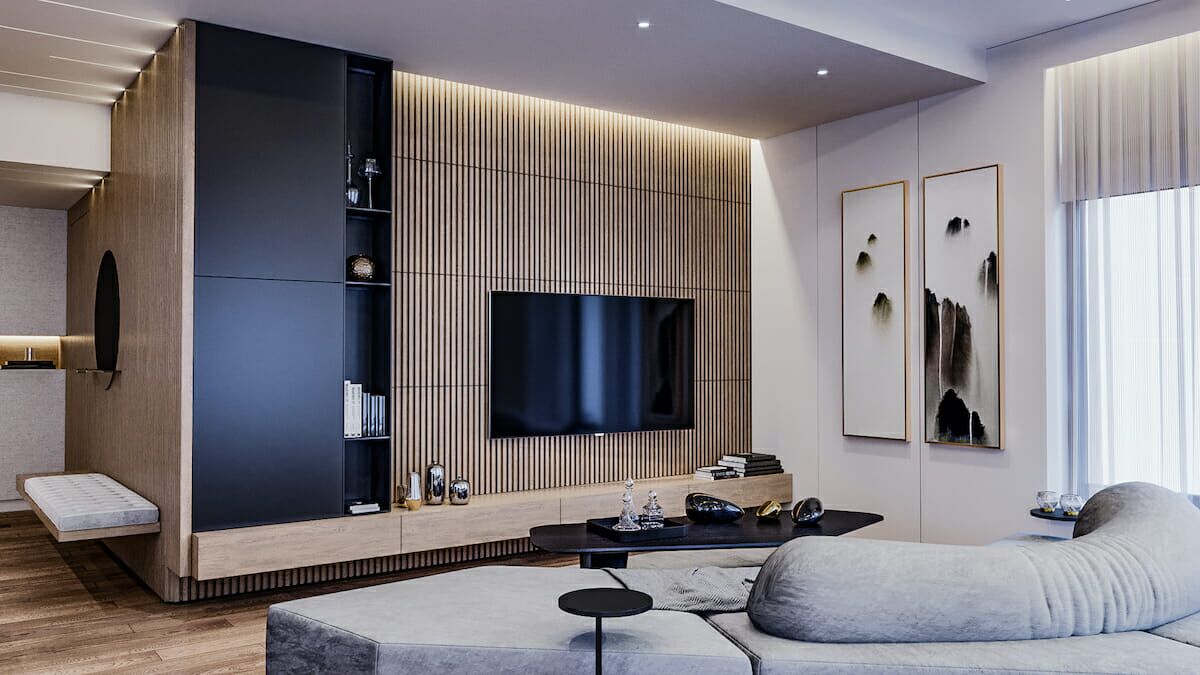Home>Interior Design>What Colleges Offer Interior Design


Interior Design
What Colleges Offer Interior Design
Modified: December 6, 2023
Discover a wide range of colleges offering interior design programs. Explore your options and find the perfect college to pursue your passion for interior design.
(Many of the links in this article redirect to a specific reviewed product. Your purchase of these products through affiliate links helps to generate commission for Storables.com, at no extra cost. Learn more)
Introduction
When it comes to pursuing a career in interior design, choosing the right college or university is crucial. Not only will it provide you with the necessary knowledge and skills to thrive in this competitive industry, but it will also open doors to valuable networking opportunities and internships. However, with so many options available, it can be overwhelming to decide which colleges offer the best interior design programs.
In this article, we will explore different types of universities and colleges that offer interior design programs, ranging from state universities to private institutions, community colleges, and even online universities. Each of these options comes with its unique advantages and considerations, so let’s delve deeper into each one.
Key Takeaways:
- State universities offer cost-effective interior design programs with state-of-the-art facilities and strong industry connections, providing a solid foundation for personal and professional growth.
- Private universities provide a unique educational experience with specialized programs, renowned faculty, and exceptional networking opportunities, offering a pathway to success in the design industry.
State Universities
State universities are a popular choice for students pursuing a degree in interior design. These institutions are funded by the state government, which often results in lower tuition fees for in-state residents. State universities also tend to have larger campuses and a wide range of academic and extracurricular opportunities.
Many state universities have well-established interior design programs that offer bachelor’s and master’s degrees in the field. These programs typically provide a comprehensive education, covering topics such as color theory, space planning, materials and finishes, lighting design, and sustainable design principles. Students also have the opportunity to undertake studio projects and gain hands-on experience through internships.
One of the advantages of attending a state university for interior design is the access to state-of-the-art facilities and resources. These institutions often have dedicated design studios, drafting labs, computer-aided design (CAD) software, and extensive libraries that house a plethora of design resources.
Moreover, state universities often have strong connections with local design firms, architecture firms, and industry professionals. This can be advantageous for students seeking internships, job placement, or mentorship opportunities. The university’s career services department may also facilitate networking events and job fairs specifically tailored to interior design students.
It is important to research the specific interior design program at each state university, as the curriculum and approach may vary. Some universities may focus more on the technical aspects of design, while others prioritize conceptual thinking and design theory. Additionally, it is crucial to consider the location and whether it aligns with your personal preferences and career goals.
Some of the top state universities known for their interior design programs include the University of Florida, University of Texas at Austin, Ohio State University, and University of Arizona. These universities have reputable design programs and faculty that are well-respected within the industry.
Overall, state universities offer a solid foundation for aspiring interior designers, combining theoretical knowledge with practical skills and industry connections. They can be a cost-effective option for in-state residents and provide ample opportunities for personal and professional growth.
Private Universities
Private universities are another option for students pursuing a degree in interior design. These institutions are privately funded and often have a reputation for offering specialized programs and smaller class sizes. Private universities can provide a more intimate learning environment and individualized attention from faculty.
Private universities with interior design programs typically offer a range of degree options, including bachelor’s and master’s degrees. These programs often have a strong emphasis on design theory, creativity, and innovation. Students will explore various aspects of interior design, such as spatial planning, ergonomics, color psychology, and sustainable design practices.
What sets private universities apart is their ability to attract renowned industry professionals as faculty members. Many private universities have faculty members who are actively involved in the design industry, bringing real-world experience and expertise into the classroom. This can provide students with valuable insights and connections that can benefit their careers.
In addition to the academic curriculum, private universities often offer opportunities for collaboration and interdisciplinary studies. Students may have the chance to work on cross-disciplinary projects with students from other design disciplines, such as architecture and graphic design. This collaborative approach can enhance creativity and allow students to develop a holistic understanding of design.
Private universities may also have well-equipped design studios, state-of-the-art technology, and access to design software and tools. These resources can enable students to explore and experiment with different design concepts and techniques.
When considering private universities for interior design programs, it is essential to evaluate factors such as tuition costs, financial aid options, and the reputation of the university. Research the faculty members, alumni success stories, and any notable partnerships or affiliations that the university may have with industry organizations.
Some renowned private universities for interior design include Parsons School of Design, Savannah College of Art and Design (SCAD), Rhode Island School of Design (RISD), and Pratt Institute. These universities have a strong reputation for producing talented and successful interior designers.
Attending a private university for interior design can provide a unique educational experience and outstanding networking opportunities. However, it is essential to weigh the financial investment associated with private institutions and determine if it aligns with your career goals and aspirations.
Research and compare interior design programs at accredited colleges and universities. Look for schools with strong industry connections, experienced faculty, and opportunities for internships or study abroad.
Community Colleges
Community colleges offer an affordable and accessible option for students interested in pursuing a degree or certificate in interior design. These institutions provide a wide range of educational programs, including associate degrees and certificate programs in interior design.
One of the main advantages of community colleges is their affordability. Tuition fees at community colleges are often significantly lower than those at universities, making them an attractive option for students looking to minimize student loan debt. Additionally, community colleges may offer financial aid options and scholarships specifically for interior design students.
Community colleges provide a comprehensive education in interior design, covering fundamental design principles, drafting techniques, color theory, and space planning. Students also gain practical skills in computer-aided design (CAD) software and relevant industry software applications.
What sets community colleges apart is their focus on practical training and hands-on experience. Many programs offer opportunities for internships, co-op experiences, and industry partnerships. These collaborations provide students with real-world exposure and the opportunity to build a professional network within the local design community.
Community college programs in interior design are often designed to transfer to four-year universities. This means that students can complete their general education requirements and foundational design courses at a community college and then transfer to a university to pursue a bachelor’s degree. This pathway allows students to save money in the early years of education while still earning a reputable degree.
While community colleges may not have the same level of resources and facilities as larger universities, they still provide access to essential tools and equipment for interior design education. Design studios, computer labs, and drafting rooms are typically available to students, allowing them to practice their skills and develop their design projects.
Examples of community colleges with reputable interior design programs include Santa Monica College, Valencia College, and Harper College. These institutions offer quality education and provide students with the necessary skills and knowledge to begin a career in interior design.
Choosing a community college for interior design can be a cost-effective way to enter the field and gain valuable hands-on experience. It is important to research the program’s transferability, faculty qualifications, and the success of its alumni to ensure a worthwhile and rewarding educational experience.
Online Universities
With the advancements in technology and the increasing demand for flexible education options, online universities have become a popular choice for students pursuing a degree in interior design. Online universities offer the convenience of remote learning, allowing students to complete coursework and engage in discussions from the comfort of their own homes or any location with internet access.
Online interior design programs provide the same curriculum and academic rigor as their on-campus counterparts. Students will learn essential design concepts, explore color theory, understand space planning, and gain proficiency in design software and tools. The coursework is typically delivered through a combination of virtual lectures, online discussions, and design projects.
One of the main benefits of online universities is the flexibility they offer. Students can work at their own pace and schedule, allowing them to balance their education with other personal or professional commitments. Whether you are a working professional, a parent, or someone residing in a remote area without access to traditional universities, online programs provide an opportunity to pursue an interior design education.
Virtual classrooms also foster a global learning environment, allowing students to interact with peers and faculty from different geographic locations. This cultural diversity can broaden perspectives and expose students to different design styles, trends, and cultural influences in interior design.
While online universities offer flexibility, it is essential to note that self-discipline and time management skills are critical for success. Without the structure of traditional classroom settings, students must be proactive in managing their time, staying on track with assignments, and seeking clarification from instructors when needed.
Online universities may also provide networking opportunities, such as virtual design conferences, webinars, or online portfolio showcases. These platforms allow students to connect with industry professionals, showcase their work, and seek feedback on their design projects.
Some reputable online universities offering interior design programs include Academy of Art University, The New School, and Full Sail University. These institutions provide comprehensive online programs with experienced faculty and a strong focus on practical skills and industry relevance.
While online universities can be a convenient option, it is essential to ensure that the program is accredited and recognized within the interior design industry. Accreditation ensures that the education received meets established standards and is recognized by employers and professional organizations.
Overall, online universities provide a flexible and accessible education option for individuals passionate about interior design. With self-discipline and dedication, students can acquire the necessary knowledge and skills to pursue a successful career in the field.
Read more: What Is Interior Design?
Conclusion
Choosing the right college or university is a critical decision when pursuing a career in interior design. The field of interior design offers a wide range of opportunities, from residential and commercial design to hospitality and sustainable design. Whether you prefer a state university, private institution, community college, or online program, each option has its own advantages and considerations.
State universities provide a comprehensive education in interior design, often with state-of-the-art facilities and strong industry connections. These institutions can be a cost-effective option for in-state residents and offer ample opportunities for personal and professional growth.
Private universities offer specialized programs, smaller class sizes, and renowned faculty members who bring real-world experience into the classroom. These institutions provide a unique educational experience and exceptional networking opportunities within the design industry.
Community colleges offer an affordable pathway to a degree or certificate in interior design. These institutions prioritize practical training, hands-on experience, and often have transfer agreements with four-year universities. Community colleges are a great option for students seeking a cost-effective way to gain foundational knowledge and build a professional network.
Online universities provide flexibility, convenience, and accessibility for students who may have other commitments or limited access to traditional universities. These programs offer the same curriculum and academic rigor as on-campus programs, allowing students to pursue their interior design education remotely.
As you consider your options, it is essential to research and evaluate each institution’s curriculum, faculty qualifications, industry connections, and alumni success stories. Additionally, consider factors such as location, tuition costs, financial aid options, and the reputation of the institution within the interior design industry.
Ultimately, the best college or university for interior design is the one that aligns with your personal goals, learning style, and career aspirations. Take the time to explore your options, visit campuses or attend virtual open houses, and speak with current students or alumni if possible. Bringing your passion and dedication to your education will pave the way for a successful career in the exciting and dynamic world of interior design.
Frequently Asked Questions about What Colleges Offer Interior Design
Was this page helpful?
At Storables.com, we guarantee accurate and reliable information. Our content, validated by Expert Board Contributors, is crafted following stringent Editorial Policies. We're committed to providing you with well-researched, expert-backed insights for all your informational needs.















0 thoughts on “What Colleges Offer Interior Design”